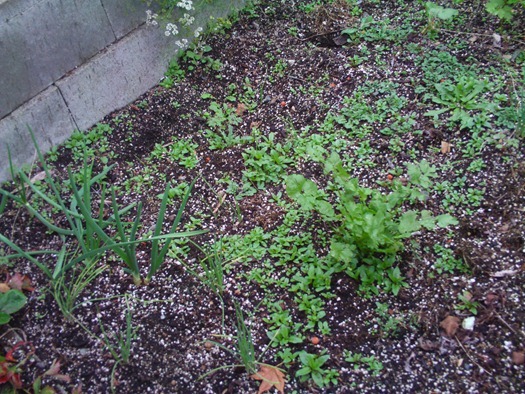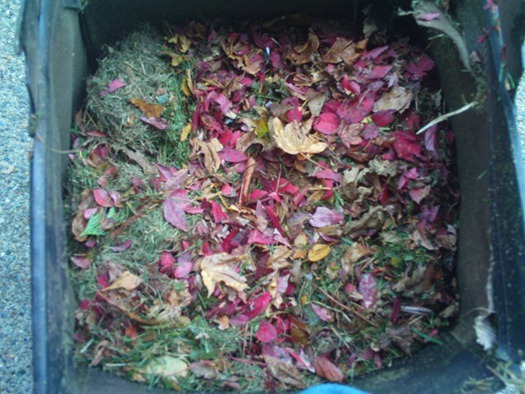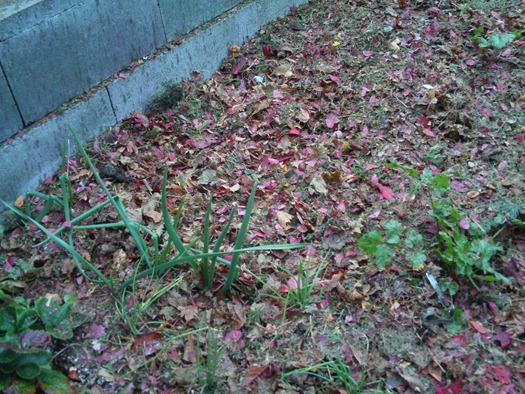Nutrient density of vegetables in your garden
10.9 years ago broccoli, leaves, lettuce, nutrients, parsley, pumpkin, Uncategorized

Just out of curiosity I got my hands on the USDA food database and had a little fun in Excel and the results were pretty interesting. Assuming I wanted to figure out what vegetables I could grow in my garden had the highest nutrient density. I wrote a formula for each nutrient from Vitamin A to Zinc what percentage rank across all of the foods did the item have. I then summed up these percentages based on 100 calories consumed to create an overall score and grouped by average across the categories as a “Nutrient Density Score.”
The results were pretty interesting and discovered some new plants I should try consuming this year.
Top 10 most nutrient dense vegetables
| Rank | Vegetable | Score | Nutrients with significant content |
| 1 | Pumpkin leaves | 24.0 | Potassium, Phosphorus, Magnesium, Leucine, Tyrosine, Threroline, Isoleucine, Phenylalanie |
| 2 | Spinach | 23.4 | Calcium, Potassium, Phosphorus, Zinc, Folate, Magnesium, Beta carotene, Tyrosine, Threroline, Isoleucine |
| 3 | Mustard Greens | 23.0 | Calcium, Potassium, Phosphorus, Vitamin C, Vitamin A, Folate, Beta carotene, Tyrosine, Arginine |
| 4 | Broccoli | 23.0 | Calcium, Phosphorus, Zinc, Pantothenic acid, Folate, Aspartic acid, Glutamic acid, Valine |
| 5 | Asparagus | 22.6 | Phosphorus, Potassium, Zinc, Copper, Selenium, Niacin, Folate, Aspartic acid, Glutamic acid |
| 6 | Turnip Greens | 22.6 | Calcium, Potassium, Beta carotene, Tyrosine, Threroline, Isoleucine, Phenylalanie, Leucine, Valine |
| 7 | Pak-Choi | 22.3 | Calcium, Phosphorus, Potassium, Vitamin C, Folate, Beta carotene, Glutamic acid, Isoleucine, Alanine |
| 8 | Swiss Chard | 21.5 | Magnesium, Phosphorus, Potassium, Copper, Beta carotene, Isoleucine, Phenylalanie |
| 9 | Green Leaf Lettuce | 21.5 | Phosphorus, Potassium, Manganese, Vitamin A, Beta carotene, Isoleucine |
| 10 | Beet Greens | 21.4 | Calcium, Phosphorus, Potassium, Zinc, Copper, Manganese, Pantothenic acid, Beta carotene |
As you can see everything in the top ten is at least the color green with most of the plants being leafy vegetables. Some honorable mentions rounding up the top 20: Chives, Kale, Zucchini, Corn salad, Okra, Cauliflower Greens, Parsley, Mushrooms, Collards, Red leaf Lettuce.
So as you know vegetables contain the most nutrients the shorter the time between they are harvested and then consumed so anywhere you can shave off a few hours of this process is to your advantage, so to benefit the most for the nutrients in your food some of the above plants are some great options.
So how about the bottom, or the top ten least nutrient dense vegetables in your garden?
Bottom 10 least nutrient dense vegetables
| Rank | Vegetable | Score |
| 1 | Indian Squash | 8.4 |
| 2 | Shiitake Mushrooms | 9.4 |
| 3 | Potatoes | 9.5 |
| 4 | Jerusalem Artichoke | 9.6 |
| 5 | Parsnips | 9.7 |
| 6 | Lemon grass | 9.7 |
| 7 | Pumpkin flowers | 10.3 |
| 8 | Arrowroot | 10.8 |
| 9 | Tomatillos | 10.9 |
| 10 | Rhubarb | 10.9 |
Now don’t get me wrong many of the plants in the above list may still have plenty of nutritional value it is just that compared to the competition they lack the shear concentration of nutrition and the diversity across the spectrum.
I know for me I am planning on trying some pumpkin leaves this year. Sounds like you just dice them up and sauté with some oil and throw in some garlic at the end and sounds like the leaves should actually be pretty sweet tasting…I will be sure to post of the success or failure of cooking pumpkin leaves.
Using leaf mulch in your garden for weed prevention
13.5 years ago garden maintenance, leaves, mulch, weed prevention, weeds
Above is unfortunately what my vegetable garden looks like, still have some cilantro, bunching onions, bulb onions, garlic, broccoli, and spinach growing but obviously I have a blanket of tiny weeds emerging with large amount of rain we have been getting. This gives me a few options:
- A. Painfully pull every weed from the garden bed…repeat
- B. Give up on my plants and just lay down some black plastic or cardboard to smother the weeds
- C. None of the above
I am going to opt for “C” on this one and go with an alternate method of applying a mulch that I am sure many of you have an abundance of at the moment…leaves.
Now you don’t want to gather your leaves and dump them on your garden bed, you need to shred the leaves. There are a couple of reasons for doing this. First it reduces surface area which allows for faster composting when you eventually work this layer into your soil next spring but also reduces the drag on the leaves to keep most of the leaves actually in your garden bed. Second this will restrict weeds from emerging, but allows leaves from emerging garlic and onions to make their way through.
Now you know why you want to shred them, now this is how you do it. Spread out your leaves on your lawn and use your lawnmower (with bagger attachment) and run over them with half of the width of your mower at a time. Now you should a nice bag of shredded leaves. You want to keep grass clippings to this mix at a minimum but a small percentage will not hurt anything.
Now take handfuls of your freshly shredded leaves and spread as a 1/3 – 3/4 inch layer over your vegetable garden. You can help out some of your less established plants by brushing off any leaves directly on top of the plants. Finish by giving the leaves a nice watering to help with the matting down process to keep the leaves in your bed and not blown all around your vegetable bed by the wind. It was raining while I was mowing my leaves and applying them so I skipped this particular step.
Using this technique you should be able to start you gardening next spring with minimal weeding, some great partially composted organic matter to work into your garden, and as an added bonus some protective mulch for your winter veggies all with materials most of use send off in our yard waste bins.





